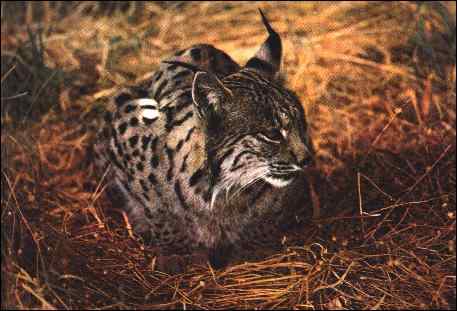|
It is enough
to imagine a carnivore perfectly adapted to this environment, an animal able to do a fantastic leap from a narrow
headland to the summit of a tree, to move without being seen while slipping silently into the coppices, a vigorous,
daring, activate, effective, flexible, perfectly proportioned animal, a lonely hunter, whose range of prey goes
from the mouse to the stag, to represent the Pardel Lynx.
|

![]()